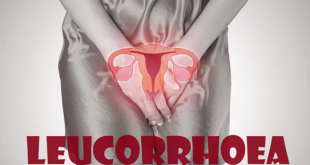Definition
Carpal tunnel syndrome (CTS) is a disorder that causes pain and weakness in the hand and wrist. CTS develop from problems in a nerve in the wrist not the muscles, as some people believe. The symptoms of CTS can range from mild to incapacitating.
The Carpal Tunnel: The carpal tunnel is a passageway that forms beneath the strong, broad transverse ligament. This ligament is a bridge that extends across the lower palm and connects the bones of the wrist (carpals) that form an arch below the tunnel.
The Median Nerve and Flexor Tendons: The median nerve and nine flexor tendons pass under the ligament bridge and through the carpal tunnel (similar to a river). They extend from the forearm up into the hand:
- The flexor tendons are fibrous cords that connect the muscles in the forearm to the fingers (two to each finger and one to the thumb). They allow flexing of the fingers and clenching of the fist.
- The median nerve plays two important roles. It supplies sensation to the palm side of the thumb, index, middle, and ring fingers, and to the flexor tendons. It provides function for the muscles at the base of the thumb (the thenar muscle).
Types of carpal tunnel syndrome
- The acute carpal tunnel syndrome type is generally associated with trauma or injury causing dislocation, fracture, and vascular disorders involving the wrist. This type is much less common and usually warrants immediate surgical interventions so as to avoid permanently damaging the joint, rendering it useless.
- The bilateralcarpal tunnel syndrome type involves both hands/wrists.
History
During the first half of the 20th century, however, most patients with carpal tunnel syndrome were diagnosed as having compression of either the brachial plexus or thenar nerve motor branch of the median nerve. As late as 1950, only twelve patients with operative release of the transverse carpal ligament for idiopathic carpal tunnel syndrome had been reported.
The delay in accurate anatomical localization of this compressive neuropathy can be attributed both to the confusion caused by the diverse manifestations of median nerve compression in the carpal tunnel, and to some interesting developments that altered early investigations in this area.
Epidemiology at international level
A paucity of population-based studies of carpal tunnel syndrome (CTS) exists; however, the incidence and prevalence in developed countries seems similar to the United States (eg, incidence in the Netherlands is approximately 2.5 cases per 1000 subjects per year; prevalence in the United Kingdom is 70-160 cases per 1000 subjects). CTS is almost unheard of in some developing countries (eg, among nonwhite South Africans). Carpal tunnel syndrome is not fatal, but it can lead to complete, irreversible median nerve damage, with consequent severe loss of hand function, if left untreated.
Risk factors of carpal tunnel syndrome
Things that put you at risk for carpal tunnel syndrome include:
- Health problems or illnesses that can cause arm pain or swelling in the joints and soft tissues in the arm, or reduce the blood flow to the hands. These include obesity, rheumatoid arthritis, diabetes, lupus, hypothyroidism, and multiple sclerosis
- Being female. Women between the ages of 40 and 60 have the highest risk. Pregnant women near the end of their pregnancies often have short-term symptoms
- Hand and wrist movements and activities that require repeated motions
- Smoking. It may contribute to carpal tunnel syndrome by affecting the blood flow to the median nerve
- Broken wrist bones, dislocated bones, new bone growth from healing bones, or bone spurs. These can take up space in the carpal tunnel and put more pressure on the median nerve
- Tumors and other growths (such as ganglions)
- Normal wear and tear of the tissues in the hand and wrist caused by aging
Symptoms of carpal tunnel syndrome
Symptoms may include any of the following:
- Clumsiness of the hand when gripping objects
- Numbness or tingling in the thumb and next two or three fingers of one or both hands
- Numbness or tingling of the palm of the hand
- Pain that extends to the elbow
- Pain in the wrist or hand in one or both hands
- Problems with fine finger movements (coordination) in one or both hands
- Wasting away of the muscle under the thumb (in advanced or long-term cases)
- Weak grip or difficulty carrying bags (a common complaint)
- Weakness in one or both hands
Causes of carpal tunnel syndrome
- CTS are often the result of a combination of factors that increase pressure on the median nerve and tendons in the carpal tunnel, rather than a problem with the nerve itself.
- Most likely the disorder is due to a congenital predisposition – the carpal tunnel is simply smaller in some people than in others.
- Other contributing factors include trauma or injury to the wrist that cause swelling, such as sprain or fracture; Over activity of the pituitary gland; hypothyroidism; rheumatoid arthritis; mechanical problems in the wrist joint; work stress; repeated use of vibrating hand tools; fluid retention during pregnancy or menopause; or the development of a cyst or tumor in the canal. In some cases no cause can be identified.
- Clinical data proves whether repetitive and forceful movements of the hand and wrist during work or leisure activities can cause carpal tunnel syndrome.
- Other disorders such as bursitis and tendonitis have been associated with repeated motions performed in the course of normal work or other activities.. Writer’s cramp may also be brought on by repetitive activity.
Diagnosis and Tests
- Medical history. The doctor will ask about any medical problems or illnesses, prior injuries, current symptoms, or daily activities that may be causing your symptoms.
- Hand diagram. You may be asked to help fill in a diagram of your hand to show where you have numbness, tingling, or pain.
- Physical exam, including comparing the strength of both hands.
More testing
If your symptoms are severe, if nonsurgical treatment has not improved symptoms, or if your symptoms aren’t clearly caused by carpal tunnel syndrome, your doctor may recommend:
- Nerve testing, which checks the median nerve
- X-rays. These can check for bone problems caused by past injury, arthritis, recently broken or dislocated bones, or tumors
- Ultrasound, to look at the size of the median nerve. It is inexpensive, comfortable, and quick
- MRI. This imaging test can find swelling of the median nerve, narrowing of the carpal tunnel, or problems with circulation of blood through the carpal tunnel
- Blood tests. These are sometimes done to check for a thyroid problem, rheumatoid arthritis, or another medical problem
Treatment and Medication
Current treatment options
- A physician may inject a patient’s carpal tunnel with a corticosteroid to decrease local swelling and inflammation to relieve pressure on the median nerve
- Wrist splinting is used to immobilize the wrist and thus prevent further unnecessary pressure on the median nerve
- Stretching and strengthening exercises for the hand and wrist can be helpful in people whose symptoms have abated. These exercises may be supervised by a physical therapist
- Medicines, such as nonsteroidal anti-inflammatory drugs (NSAIDs) to relieve pain and reduce inflammation.
- Surgery is another option. Endoscopic and open surgeries both aim to cut the ligament pressing on the median nerve, thus relieving the pressure which causes carpal tunnel syndrome
Prevention of carpal tunnel syndrome
- Reduce your force and relax your grip.If your work involves a cash register or keyboard, for instance, hit the keys softly. For prolonged handwriting, use a big pen with an oversized, soft grip adapter and free-flowing ink.
- Take frequent breaks.Gently stretch and bend hands and wrists periodically. Alternate tasks when possible. This is especially important if you use equipment that vibrates or that requires you to exert a great amount of force.
- Watch your form.Avoid bending your wrist all the way up or down. A relaxed middle position is best. Keep your keyboard at elbow height or slightly lower.
- Improve your posture.Incorrect posture rolls shoulders forward, shortening your neck and shoulder muscles and compressing nerves in your neck. This can affect your wrists, fingers and hands.
- Change your computer mouse.Make sure that your computer mouse is comfortable and doesn’t strain your wrist.
- Keep your hands warm.You’re more likely to develop hand pain and stiffness if you work in a cold environment. If you can’t control the temperature at work, put on fingerless gloves that keep your hands and wrists warm.
 Diseases Treatments Dictionary This is complete solution to read all diseases treatments Which covers Prevention, Causes, Symptoms, Medical Terms, Drugs, Prescription, Natural Remedies with cures and Treatments. Most of the common diseases were listed in names, split with categories.
Diseases Treatments Dictionary This is complete solution to read all diseases treatments Which covers Prevention, Causes, Symptoms, Medical Terms, Drugs, Prescription, Natural Remedies with cures and Treatments. Most of the common diseases were listed in names, split with categories.








My aunt has this syndrome for a long time now. is there Any form of treatment that can relieve her pain permanently??
NSAIDs, such as ibuprofen (Advil, Motrin IB, others), may help relieve pain from carpal tunnel syndrome in the short term. There isn’t evidence, however, that these drugs improve carpal tunnel syndrome. Corticosteroids. Your doctor may inject your carpal tunnel with a corticosteroid such as cortisone to relieve pain.